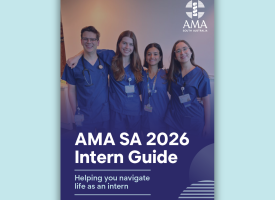Collaboration between nurses and doctors key to best patient care
The AMA argued against the fragmentation of health care, warning of adverse patient outcomes, in its submission to the Government’s consultation paper on nursing practitioners.

The AMA argued against the fragmentation of health care, warning of adverse patient outcomes, in its submission to the Government’s consultation paper on nursing practitioners.
The AMA has maintained its strong stance on collaborative arrangements between nurses and doctors in its submission to the Nurse Practitioner 10 Year Plan Consultation Paper.
In its submission of late last year, the AMA acknowledged the valuable contribution nurses can make to a multidisciplinary health care team but did not support proposals for nursing practitioners’ access to the Medicare Benefits Schedule and Pharmaceutical Benefits Scheme independent of collaborative arrangements.
The submission argued against any moves towards the fragmentation of patient care, with the inherent risk to patient safety this would involve alongside increased overall health system costs.
“With Australia having now decided to embrace the medical home, policy must be directed towards further strengthening General Practice and supporting GPs to collaborate with other health care professionals, like NPs, in circumstances where the care of the patient would benefit from this,” the AMA submission said.
“Any policy direction that seeks to support NPs in carving out a more independent role in the health system is the antithesis of the move towards the medical home and the benefits to the health system that this will bring.”
Richard Kidd, Chair of the AMA Council of General Practice, said in a recent article on the draft Nurse Practitioner 10 Year Plan consultation paper, that the current legislative requirements for collaborative arrangements provide a framework for safe patient care where everyone works together and not in isolation.
“The consequence of undermining the collaborative model is that care invariably will be fragmented. This will, increase the risk of poor patient outcomes due to misdiagnosis and missed diagnosis, delayed medical intervention and treatment and adverse outcomes from the interaction of different medications and treatments,” said Dr Kidd.



